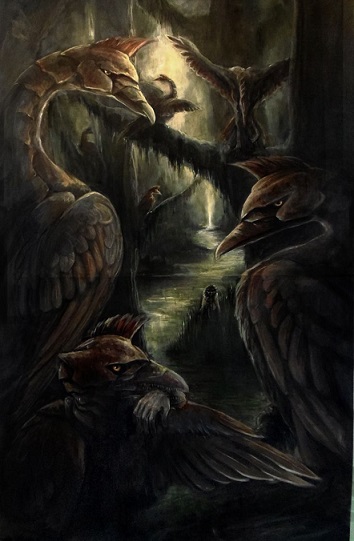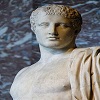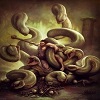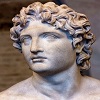Stymphalian Birds
the Metal-beaked bringers of death
The Stymphalian birds were a crew of tough customers belonging to Ares, the Greek god of war. These birds were apparently extremely vicious and unpleasant, and they were ultimately eradicated from Greece by the hero Hercules, as part of his 12 labors, a series of challenging tasks which he undertook as an act of atonement.
Fortunately for the Greeks, Hercules managed to successfully permanently rout the birds, and they have not returned since.
Several things made the Stymphalian birds rather distinctive. The first was their sharp metal feathers, which could be hurled by the birds like spears. The birds also had heavy brass claws, and poisonous poop. They also had a predilection for human flesh, although most legends said that they would settle for livestock such as cattle in a pinch. To say the least, it would seem that Ares had unusual taste in pets.
According to some stories, the Stymphalian birds attacked the Argonauts during their travels in search of the Golden Fleece with Jason. Despite being interrupted by a series of travails, the Argonauts ultimately succeeded in their task, restoring Jason to his place on the throne.
The birds pop up most frequently in stories about the labors of Hercules. According to legend, they migrated from their usual home to Lake Stymphalia, where they set up camp in the marshes and dense woods of the region.
Something about the environment must have been favorable to the birds, because they quickly began breeding and terrorizing the region. The Stymphalian birds destroyed homes and gardens, attacked livestock, and went after humans when they could catch them.
Their reign of terror was brought to an end by Hercules, who was ordered to defeat the Stymphalian birds as his sixth task. Upon reaching the site of the colony, Hercules realized that this task would be extremely difficult, as he could not walk in the marshes near the lake, and the forest that the birds roosted in was so dense that it was pitch black, making it impossible to hunt.
The goddess Athena took pity on Hercules, lending him a pair of cymbals which he could use to spook the birds into flight, allowing him to shoot them.
According to most legends, Hercules did not manage to slay all of the Stymphalian birds, but he killed enough of them to spur the birds to migrate. Ultimately, the surviving birds returned to their master Ares, who was undoubtedly delighted to see them.
[1]
Origin
When the sun is in the sign of Sagittarius, the constellations Lyra, Aquila, and Cygnus, rise. Aquila is an eagle, and Cygnus is a swan, whereas Lyra is a lyre, but originally Lyra was a vulture, gaining the lyre over time, and eventually becoming it.
At this time of year (i.e. during Sagittarius), the evenings darken, and thus the bird constellation were considered evil. Also around this time, the rain season in Greece starts, creating swampland from previously drier areas.
To the Greeks, Sagittarius (the constellation) had various different interpretations, including as a rattle. Also, the next constellation on the sun's transit after the birds is Delphinus, whose myth concerns the saving of Arion, a court musician, by a dolphin.
Herakles scared off the Stymphalian Birds (who lived in a swamp) with noise, and firing an arrow at them (the constellation Sagitta, an arrow, is aiming towards Aquila).
[2]












